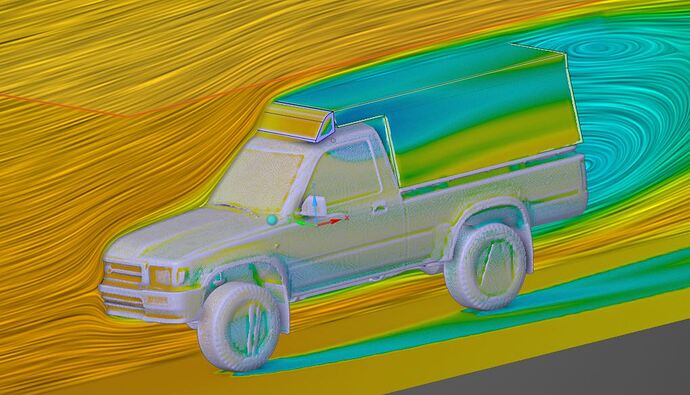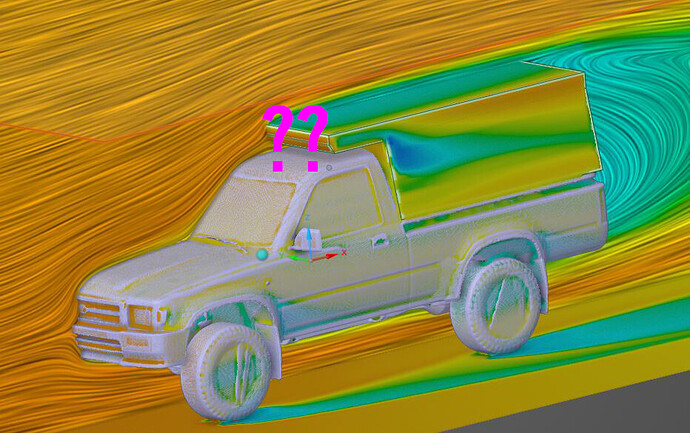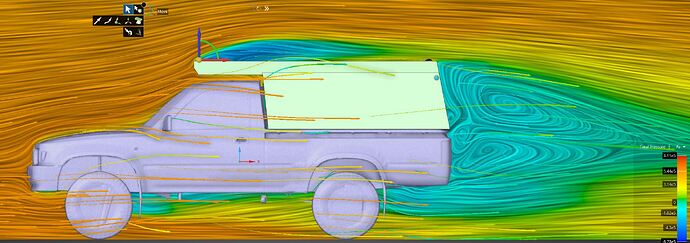Back to the topic of aerodynamics.

(my simulation of an AirTab-like vortex generator)
I’d like to explore options to reduce wind noise, back pressure, and buffeting, as well as potentially see some small gas mileage gains. My restrictions are that I don’t want to make the GFC look bubbly, add a bunch of weight, or change the look too much. Let’s be real - it’s a dashingly handsome slap in the face of aerodynamic conventions and I love it that way.
From my experience and early simulations, it appears there is a high pressure zone that forms between the cab and upper portion of the bed. When I’m driving 65MPH+, I can look behind me in the cab and see small but significant fore and aft movement between the rear window and the camper window. I’d like to reduce this as much as possible. Today I was reminded that drag increases as the square of the speed- which is why we don’t feel it in city driving, but highway driving, where you should be getting your best mileage, is deeply impacted. Twice as fast - four times the drag.
I see three potential avenues of attack.
-
A fairing (but probably compound curvature based on the NASA results above)
-
Blocking the space between the cab and camper (initial results poor)
-
Doing something to elsewhere that negates this negative effect (maybe vortex generators at all the detachment surfaces)
(in these test sims the GFC is not accurately modeled - will have to fix that as things get more serious)
Low fidelity look at vortex generators. I don’t quite have the resolution or the model setup to evaluate them properly right now. No vortex generators VS a line of vortex generators on the trailing edge of the roof:
References:
- Very cool video on Vortex Generators (airtabs).
- Interpreting CFD results (excellent)
- Airtabs marketing video with pretty good information on how they work and the basic principles of airflow.
- One of the better videos showing airtabs on a fast car, visualized with tufts
- Aerodynamic engineer with a very clear explanation of flow separation via vortex generators
- Separated and attached airflow
- Post from GFC staff about rake angle affecting camper aerodynamics (very interesting and perhaps obvious in hindsight)
Update: (I ordered a pair of airtabs to play with)




